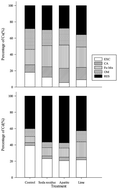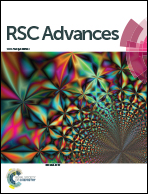Changes in the heavy metal distributions in whole soil and aggregates affected by the application of alkaline materials and phytoremediation
Abstract
To explore the combined remedy effect of alkaline materials and plants on the distribution of heavy metals in whole soil and aggregates, a 3 year in situ experiment was carried out in a dual copper (Cu)/cadmium (Cd)-contaminated farmland in this study. Treatment was applied by the addition of soda residue (11.2 t ha−1), apatite (22.3 t ha−1), or lime (4.45 t ha−1), respectively, into the heavy metals-contaminated soil as a single application; Elsholtzia splendens was continually planted for 3 years in all the experimental plots. The total metals amounts and distributions of Cu and Cd in the whole soil and aggregates were then investigated. Our results showed that (1) although the total concentrations of Cu and Cd were slightly increased in the whole soil, their exchangeable concentrations were significantly reduced in both abovementioned treatments; (2) all the abovementioned 3 treatments significantly increased the stability of the dry and wet aggregates when compared with the control treatment; (3) similar to the whole soil, combined remediation groups slightly increased the concentrations of Cu and Cd in the aggregates, but decreased their available and exchangeable concentrations observably. Specifically, the highest concentrations of Cu and Cd were found in the aggregates sized <0.053 mm; however, mass loadings of Cu and Cd were observed in the 0.053–0.25 mm and 0.25–2 mm sized fractions, respectively; moreover, the treatments increased the mass loading of Cu and Cd in the aggregates sized >0.25 mm. In total, the combined remediation adopted in our study dramatically decreased the available concentrations of both Cu and Cd in the whole soil and aggregates. The distribution variations of Cu and Cd caused by passivator-plant combined remediation in the whole soil might be because more metal ions have been transformed into less mobile fractions, whereas the heavy metal distribution differences in the aggregates might be not only correlated with the size of the soil wet aggregates, but also possibly controlled by the soil organic carbon.



 Please wait while we load your content...
Please wait while we load your content...